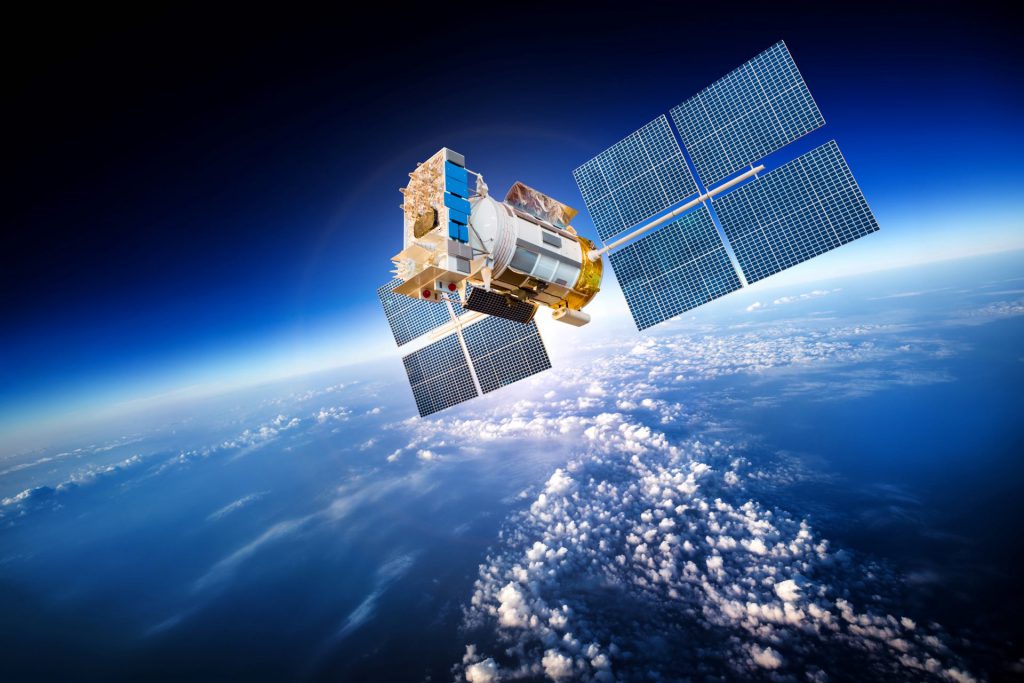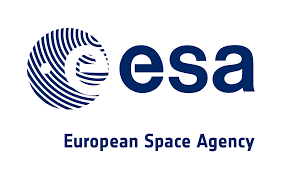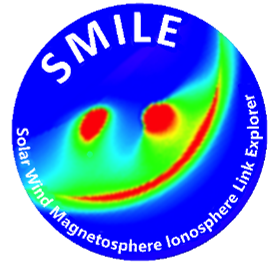Photek Awarded European Space Agency (ESA) SMILE Space Mission 2024 Contract for MCP Image Detectors for the SMILE Ultraviolet Imager
Press Release
Interview with Tom Conneely – Senior R&D Systems Scientist, Photek

Introduction
SMILE – (Solar-wind Magnetosphere Ionosphere Link Explorer) Satellite is a space scientific mission in collaboration between the European Space Agency (ESA) and the National Space Science Centre (NSSC) of the Chinese Academy of Sciences (CAS) and Photek Limited. The scientific instruments onboard the satellite will study our Magnetosphere on a global scale, building a more complete understanding of the Sun-Earth connection by measuring the solar wind and its dynamic interaction with the Magnetosphere . From its vantage point, SMILE will observe the solar wind interaction with the Magnetosphere with its X-ray and ultraviolet cameras.
SMILE will tackle three key questions that currently remain unresolved:
- What are the fundamental modes of the dayside solar wind/Magnetosphere interaction?
The manner in which energy and plasma enters the Magnetosphere is crucial to understanding and predicting how the Magnetosphere will respond. SMILE will explore the phenomenon of magnetopause reconnection and seek to determine when and where transient and steady reconnection states dominate. - What defines the substorm cycle?
The substorm, a disturbance in Earth’s Magnetosphere that causes energetic particles to enter the ionosphere from higher latitudes, is thought to control how energy and plasma circulate within Earth’s Magnetosphere . SMILE aims to define this cycle, including timing and amplitudes. - How do CME-driven storms arise, and what is their relationship to substorms?
Geomagnetic storms driven by coronal mass ejections (CME) represent a severe space weather threat. SMILE will study how and why CME-driven storms develop and determine whether they are always separate phenomena or can be considered as sequences of substorms.
What are Photek contributing for the SMILE project?
Photek will design and manufacture a novel MCP 118 image intensifier detector for the SMILE UV Imager. The detector is an image intensifier sensitive in the far UV from 120 to 200 nanometers with the wavelength of interest for the UVI system being 160 to 180 nanometers. It uses a Caesium Iodide (CsI) photocathode and microchannel plate to amplify the light which is then conveyed back by a Phosphor screen. Our partners in this project, the Chinese National Space Science Centre will use a relay lens to couple the detector onto a CMOS sensor that forms part of the UV telescope.
Can you describe the applications and the challenges related to this application?
SMILE Project
The SMILE Satellite will transport the SMILE UV Imager designed to image the Earth’s Magnetosphere. The Earth has a magnetic field, and the magnetic field traps ions and charged particles from the solar winds coming from the Sun. These ions build up around the Earth, and are collectively referred to as space weather.
In solar storms or coronial mass ejections (large expulsions of plasma and magnetic field from the Sun’s corona) the Sun frequently produces a burst of high energy ions that travel out to the solar system. Occasionally they will hit Earth and the SMILE mission wants to study how these events impact the Earths magnetic fields, the Magnetopause, and the Magnetosphere. This is critical as these huge bursts of energy can overload and damage satellite power systems. In a severe case, these bursts of energy could hit the Earth’s surface and if picked up by the power networks, they could potentially overpower the mains power supply to an entire country.
We of course want to avoid this happing. One simple way to solve the problem is to turn off the power and this will protect the power networks and Satellites. However, we do not want to do turn off the power unnecessarily. The SMILE Mission aims to give us a better understanding of these phenomena and allow us to better anticipate and protect against these events during Solar Storms.
Detector Application
The Ultraviolet Imager (UVI) is an ultraviolet camera to image Earth’s northern auroral regions. It will study the connection between the processes taking place in the magnetospheric boundaries, and those acting on the charged particles precipitating into our ionosphere.
This imager is a CCD-based camera centred on the 160-180 nm waveband, with a 10° × 10° field of view. It will have a spatial image resolution at apogee of 150 km and will use four thin film-coated mirrors to guide light into its detector. The temporal resolution will be up to 60s.
What is special about this solution provided by the Photek technology for this project?
The Photek detector is Space qualified, we have undertaken the qualification of all the components and the detector system as a whole to assure that it will survive the conditions in Space. This includes vibration testing, temperature cycling and vacuum testing. We ensured through design and qualification that it will survive the rigours of launching the satellite and conditions in orbit and Space
The CsI photocathode we use is an exceptional photocathode choice for the far UV of the far UV emission line (160 to 180 nanometers ). It provides single photon sensitivity, excellent imaging performance and extremely low readout noise
A challenge with the far UV is that the input window to the detector must be transparent in UV light. (Standard glass is not transparent in the far UV). The Photek detector has a magnesium fluoride input window that allows the UV light to pass and be detected by the photocathode. To protect against radiation damage, the magnesium fluoride input widow and phosphor screen in the detector, have been radiation protected, as the SMILE mission is outside of the Magnetosphere and is not protected from the high radiation solar wind.
What are the main milestones of this project for Photek?
The project has four main phases:
July 2022 – Phase 1 – Design of Qualification Model
We are currently in the design phase, to be finalised by the end of March . We will then begin building the qualification model. The qualification model will be evaluated at Photek under the strict testing regimes demanded by space conditions The qualification model will then be evaluated by our customer ESA and the Chinese Space Agency to make sure that it fits the requirements of the mission.
January 2023 – Phase 2 Build of Flight Model
Once ESA have approved the qualification model the next phase is the build of the flight model detector that will go into Space
May 2023- Phase 3 Build of Spare Detector
We will build a third detector which is a spare which is in case the flight model gets damaged
End 2024 -Phase 4 Launch of SMILE Satellite
Launch of SMILE Satellite
Gareth Jones Managing Director Photek
“I’m delighted that we continue to build upon the long and proud Space heritage that we have here at Photek . Our team is looking forward on working with ESA in support of the SMILE Mission and its exciting objectives.”
For Further Information Visit the European Space Agency Site





